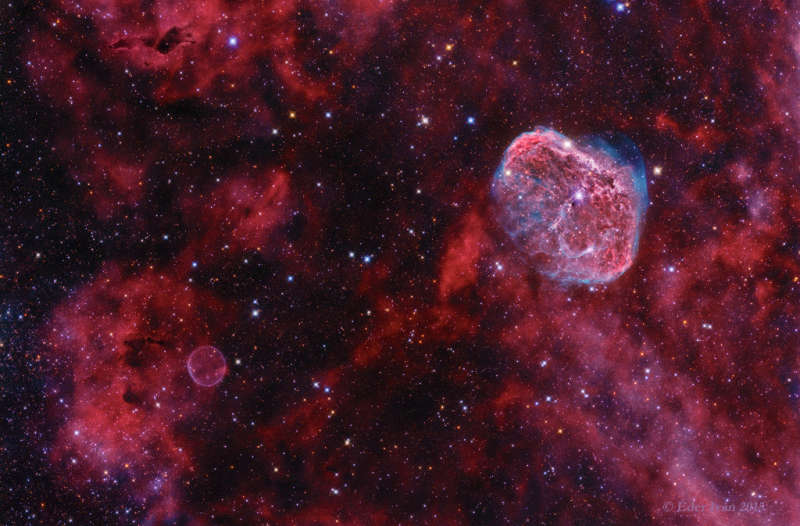Credit & Copyright: Ivan Eder
Explanation:
These clouds of gas and dust
drift through
rich star fields along the plane of our Milky Way Galaxy toward the
high flying constellation Cygnus.
Caught within the telescopic field of view are the
Soap Bubble (lower left) and the
Crescent Nebula (upper right).
Both were formed at a final phase in the life of a star.
Also known as NGC 6888,
the Crescent was shaped as its bright, central massive
Wolf-Rayet
star, WR 136, shed its outer envelope in
a strong stellar wind.
Burning through fuel at a prodigious rate, WR 136 is near the end of
a short life
that should finish in a spectacular
supernova explosion.
recently discovered Soap Bubble Nebula is likely a
planetary
nebula, the final shroud of a lower mass, long-lived, sun-like star
destined to become a slowly cooling white dwarf.
While both are some 5,000 light-years or so distant,
the larger Crescent Nebula is around 25 light-years across.
1999 2000 2001 2002 2003 2004 2005 2006 2007 2008 2009 2010 2011 2012 2013 2014 2015 2016 2017 2018 2019 2020 2021 2022 2023 2024 2025 |
Январь Февраль Март Апрель Май Июнь Июль Август Сентябрь Октябрь Ноябрь Декабрь |
NASA Web Site Statements, Warnings, and Disclaimers
NASA Official: Jay Norris. Specific rights apply.
A service of: LHEA at NASA / GSFC
& Michigan Tech. U.
|
Публикации с ключевыми словами:
Cygnus - NGC 6888 - Лебедь - Туманность Полумесяц
Публикации со словами: Cygnus - NGC 6888 - Лебедь - Туманность Полумесяц | |
См. также:
Все публикации на ту же тему >> | |
